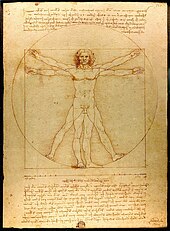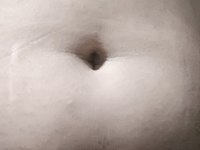নাভি: সংশোধিত সংস্করণের মধ্যে পার্থক্য
1টি উৎস উদ্ধার করা হল ও 0টি অকার্যকর হিসেবে চিহ্নিত করা হল। #IABot (v2.0beta10ehf1) |
সম্পাদনা সারাংশ নেই ট্যাগ: মোবাইল সম্পাদনা মোবাইল ওয়েব সম্পাদনা |
||
| ২১ নং লাইন: | ২১ নং লাইন: | ||
'''নাভি''' মানব দেহের বহিরাঙ্গের একটি বিশেষ স্থান। মাতৃগর্ভে থাকা কালে মানব ভ্রূণে যে নাড়ির মাধ্যমে মায়ের শরীর থেকে খাদ্য সংবাহিত হয় শিশুর জন্মকালে তা কেটে ফেলা হয় এবং একটি প্যাঁচ দিয়ে কাটা মুখ বন্ধ করা হয়। এই সুস্পষ্ট অংশটি মানবদেহের তলপেটের ঠিক ওপরে চিরকাল দৃশ্যমান থাকে এবং নাভি নামে আখ্যায়িত। চিকিৎসা শাস্ত্রে একে বলা হয় ''Umbilicus''। সকল স্তন্যপায়ী প্রাণী যাদের জন্ম মাতৃ জরায়ুতে তাদের নাভী থাকে। |
'''নাভি''' মানব দেহের বহিরাঙ্গের একটি বিশেষ স্থান। মাতৃগর্ভে থাকা কালে মানব ভ্রূণে যে নাড়ির মাধ্যমে মায়ের শরীর থেকে খাদ্য সংবাহিত হয় শিশুর জন্মকালে তা কেটে ফেলা হয় এবং একটি প্যাঁচ দিয়ে কাটা মুখ বন্ধ করা হয়। এই সুস্পষ্ট অংশটি মানবদেহের তলপেটের ঠিক ওপরে চিরকাল দৃশ্যমান থাকে এবং নাভি নামে আখ্যায়িত। চিকিৎসা শাস্ত্রে একে বলা হয় ''Umbilicus''। সকল স্তন্যপায়ী প্রাণী যাদের জন্ম মাতৃ জরায়ুতে তাদের নাভী থাকে। |
||
== |
==কাঠামো== |
||
আপাদত ইংরেজি আর্টিকেল টি ব্যাবহার করা হচ্ছে, খুব শীগ্রই অনুবাদ দেওয়া হবে। |
|||
==Structure== |
|||
{{See also|Umbilical vein|Umbilical artery}} |
|||
[[File:Da Vinci Vitruve Luc Viatour.jpg|thumb|left|upright|The navel is the centre of the circle in this drawing of the ''[[Vitruvian Man]]'' by [[Leonardo da Vinci]]]] |
|||
The umbilicus is used to visually separate the abdomen into quadrants.<ref name="Openstax Anatomy & Physiology ">{{cite web | url=http://cnx.org/content/col11496/latest/ | title=Anatomy & Physiology | publisher=Openstax college at Connexions | accessdate=November 16, 2013}}</ref> |
|||
The umbilicus is a prominent scar on the abdomen, with its position being relatively consistent among humans. The skin around the waist at the level of the umbilicus is supplied by the tenth thoracic [[spinal nerve]] (T10 [[dermatome (anatomy)|dermatome]]). The umbilicus itself typically lies at a vertical level corresponding to the junction between the L3 and L4 [[vertebrae]],<ref>{{cite book |last=Ellis |first=Harold |title=Clinical Anatomy: Applied Anatomy for Students and Junior Doctors |publisher=Wiley |location=New York |year=2006 |isbn=1-4051-3804-1 }}{{page needed|date=August 2015}}</ref> with a normal variation among people between the L3 and L5 vertebrae.<ref>{{cite book |chapterurl=http://www.dartmouth.edu/~humananatomy/part_5/chapter_25.html |title=Basic Human Anatomy: A Regional Study of Human Structure |first1=Ronan |last1=O'Rahilly |first2=Fabiola |last2=Müller |first3=Stanley |last3=Carpenter |first4=Rand |last4=Swenson |chapter=Abdominal walls |publisher=Dartmouth Medical School |year=2004}}</ref> |
|||
Parts of the adult navel include the "umbilical cord remnant" or "umbilical tip", which is the often protruding scar left by the detachment of the umbilical cord. This is located in the centre of the navel, sometimes described as the ''button''. Around the umbilical cord remnant, is the "umbilical collar", formed by the dense fibrous [[umbilical ring]]. Surrounding the umbilical collar is the periumbilical skin. Directly behind the navel is a thick fibrous cord formed from the umbilical cord, called the [[urachus]], which originates from the bladder.<ref name=Parts>{{cite journal |last1=Khati |first1=Nadia J. |last2=Enquist |first2=Erik G. |last3=Javitt |first3=Marcia C. |title=Imaging of the Umbilicus and Periumbilical Region |journal=Radiographics |volume=18 |issue=2 |pages=413–4 |year=1998}}</ref> |
|||
===Forms=== |
|||
The navel is unique to each individual due to its being a scar, and various general forms have been classified by medical practitioners.<ref>{{cite book |last=Shiffman |first=Melvin |title=Adult Umbilical Reconstruction: Principles and Techniques |publisher= Springer |location=Switzerland |year=2017 |isbn=978-3-319-43885-6 |page=53 |chapter=7.3}}</ref> |
|||
<ref name=Types>{{cite book |last=Mohamed |first=Fahmy |title=Umbilicus Types and Shapes |publisher=Springer |location=Egypt |year=2018 |doi=10.1007/978-3-319-62383-2_22 |pages=105–8}}</ref> |
|||
*'''Outie''': A navel consisting of the umbilical tip protruding past the periumbilical skin is an outie. Essentially any navel which is not concave. A study taken of 1008 individuals aged at least 19 years old found that 49% have outies.<ref name="pmid11369993">{{cite journal |last1=Meier |first1=Donald E. |last2=OlaOlorun |first2=David A. |last3=Omodele |first3=Rachael A. |last4=Nkor |first4=Sunday K. |last5=Tarpley |first5=John L. |title=Incidence of Umbilical Hernia in African Children: Redefinition of 'Normal' and Reevaluation of Indications for Repair |journal=World Journal of Surgery |volume=25 |issue=5 |pages=645–8 |year=2001 |pmid=11369993 |doi=10.1007/s002680020072 }}</ref> |
|||
**'''Swirly/Spiral''': A rare form in which the umbilical scar literally forms a swirl shape. |
|||
**'''Split''': The protruding umbilical scar extends outwards, but is cleft in two by a fissure which extends part or all the way through the umbilical scar. This form is similar in appearance to a coffee bean. |
|||
**'''Protrusion''': The umbilical cord remnant is completely divulged, exposing the full umbilical scar. |
|||
**'''Circlet''': Although the entirety of the umbilical cord remnant sits outwith the umbilical collar, the centre of the knot is inset by a deep fissure. Unlike a split outie, in this form the fissure is contained centrally and does not extend past the umbilical cord remnant in any direction, much akin to a 'donut' shape.<ref>{{cite book |last=Stephen Cullen |first=Thomas |title=Umbilicus |publisher= W.B.Saunders Company |location=Australia |year=1916 |isbn=978-0-7334-2609-4 |page=1.1-1.7 |chapter=2}}</ref> |
|||
*'''Innie''': A navel in which the umbilical tip does not protrude past the periumbilical skin. Any navel which is concave. |
|||
**'''Round shaped''': Round navels are completely circular with no hooding. |
|||
**'''Vertical shaped''': Some navels present in the form of a more elongate hollow parallel with the [[Linea alba (abdomen)|linea alba]]. |
|||
**'''Oval''': This form consists of three variants; superior hooding, inferior hooding, no hooding. |
|||
**'''T-shaped''': As the name states, the scar is in the shape of a T, and may have superior hooding to various extent. |
|||
**'''Horizontal''': The scar is least visible as the natural lines of the [[tendinous intersection]] fold over the scar. |
|||
*'''Distorted''': Any navel which does not fit well into any of the other categories. |
|||
<gallery widths="200" heights="200"> |
|||
File:Carlson Twins.jpg|Both [[Carlson Twins|Carlson twins]] have a swirly navel |
|||
File:T-shaped navel.jpg|A t-shaped navel |
|||
File:Navel 2 - Picture by Giovanni Dall'Orto, July 25 2010.jpg|One of many variations of an outie |
|||
File:Belly Button.jpg|An innie navel |
|||
</gallery> |
|||
== চিকিৎসাশাস্ত্রীয় তাৎপর্য == |
== চিকিৎসাশাস্ত্রীয় তাৎপর্য == |
||
২০:১২, ৩০ জুলাই ২০১৯ তারিখে সংশোধিত সংস্করণ
| নাভি | |
|---|---|
 মানবদেহে সম্মুখভাবে মাঝ বরাবর তলপেটের ঠিক ওপরভাগে ‘নাভি’ অবস্থিত। | |
| বিস্তারিত | |
| পূর্বভ্রূণ | Umbilical cord Ductus venosus[তথ্যসূত্র প্রয়োজন] |
| ধমনী | Umbilical artery |
| শিরা | Umbilical vein |
| শনাক্তকারী | |
| লাতিন | Umbilicus |
| মে-এসএইচ | D014472 |
| টিএ৯৮ | A01.2.04.005 |
| টিএ২ | 261 |
| এফএমএ | FMA:61584 |
| শারীরস্থান পরিভাষা | |
নাভি মানব দেহের বহিরাঙ্গের একটি বিশেষ স্থান। মাতৃগর্ভে থাকা কালে মানব ভ্রূণে যে নাড়ির মাধ্যমে মায়ের শরীর থেকে খাদ্য সংবাহিত হয় শিশুর জন্মকালে তা কেটে ফেলা হয় এবং একটি প্যাঁচ দিয়ে কাটা মুখ বন্ধ করা হয়। এই সুস্পষ্ট অংশটি মানবদেহের তলপেটের ঠিক ওপরে চিরকাল দৃশ্যমান থাকে এবং নাভি নামে আখ্যায়িত। চিকিৎসা শাস্ত্রে একে বলা হয় Umbilicus। সকল স্তন্যপায়ী প্রাণী যাদের জন্ম মাতৃ জরায়ুতে তাদের নাভী থাকে।
কাঠামো
আপাদত ইংরেজি আর্টিকেল টি ব্যাবহার করা হচ্ছে, খুব শীগ্রই অনুবাদ দেওয়া হবে।
Structure

The umbilicus is used to visually separate the abdomen into quadrants.[১]
The umbilicus is a prominent scar on the abdomen, with its position being relatively consistent among humans. The skin around the waist at the level of the umbilicus is supplied by the tenth thoracic spinal nerve (T10 dermatome). The umbilicus itself typically lies at a vertical level corresponding to the junction between the L3 and L4 vertebrae,[২] with a normal variation among people between the L3 and L5 vertebrae.[৩]
Parts of the adult navel include the "umbilical cord remnant" or "umbilical tip", which is the often protruding scar left by the detachment of the umbilical cord. This is located in the centre of the navel, sometimes described as the button. Around the umbilical cord remnant, is the "umbilical collar", formed by the dense fibrous umbilical ring. Surrounding the umbilical collar is the periumbilical skin. Directly behind the navel is a thick fibrous cord formed from the umbilical cord, called the urachus, which originates from the bladder.[৪]
Forms
The navel is unique to each individual due to its being a scar, and various general forms have been classified by medical practitioners.[৫] [৬]
- Outie: A navel consisting of the umbilical tip protruding past the periumbilical skin is an outie. Essentially any navel which is not concave. A study taken of 1008 individuals aged at least 19 years old found that 49% have outies.[৭]
- Swirly/Spiral: A rare form in which the umbilical scar literally forms a swirl shape.
- Split: The protruding umbilical scar extends outwards, but is cleft in two by a fissure which extends part or all the way through the umbilical scar. This form is similar in appearance to a coffee bean.
- Protrusion: The umbilical cord remnant is completely divulged, exposing the full umbilical scar.
- Circlet: Although the entirety of the umbilical cord remnant sits outwith the umbilical collar, the centre of the knot is inset by a deep fissure. Unlike a split outie, in this form the fissure is contained centrally and does not extend past the umbilical cord remnant in any direction, much akin to a 'donut' shape.[৮]
- Innie: A navel in which the umbilical tip does not protrude past the periumbilical skin. Any navel which is concave.
- Round shaped: Round navels are completely circular with no hooding.
- Vertical shaped: Some navels present in the form of a more elongate hollow parallel with the linea alba.
- Oval: This form consists of three variants; superior hooding, inferior hooding, no hooding.
- T-shaped: As the name states, the scar is in the shape of a T, and may have superior hooding to various extent.
- Horizontal: The scar is least visible as the natural lines of the tendinous intersection fold over the scar.
- Distorted: Any navel which does not fit well into any of the other categories.
-
Both Carlson twins have a swirly navel
-
A t-shaped navel
-
One of many variations of an outie
-
An innie navel
চিকিৎসাশাস্ত্রীয় তাৎপর্য
নাভির যত্ন
নবজাতকের নাভির প্রযত্ন
অসুখ-বিসুখ
নাভীসংশ্লিষ্ট অন্যান্য সমস্যা
নাভিতে ব্যাক্টেরিয়ার সংক্রমণে প্রদাহ সৃষ্টি হতে পারে। এতে দেহের তাপমাত্রা বৃদ্ধি পায় এবং নাভিমূলে পুঁজ দেখা দিতে পারে। এই সমস্যাকে চিকিৎসাশাস্ক্রীয় ভাষায় বলা হয় ওমফ্যালাইটিস। এর প্রতিকার হিসাবে ডাক্তাররা রোগীকে উপযুক্ত অ্যান্টিবায়োটিক দিয়ে থাকেন।
শল্যচিকিৎসা
নিরাপত্তামূলক ব্যবস্থা
সমাজ ও সংস্কৃতি
নাভির নিচে শাড়ী
প্রাচীন চিত্রকলায় দৃশ্যমান নাভি সহ অনাবৃত পেটের নারীদেহ প্রায়শঃ দেখা যায়। তবে ভারতীয় সংস্কৃতিতে নারীরা শাড়ী সাধারণতঃ এমনভাবে পরে যেন নাভি ঢেকে থাকে। তবে বিংশ শতাব্দীর মধ্যভাগের শুরুর দিকে নাভির নিচে শাড়ী পরার ফ্যাশন চালু হয়। ধনী পরিবারের কিছু মেয়ে, অভিনেত্রী ও মডেলদের মধ্যে শুরু হলেও নাভির নিচে শাড়ী পরা বিস্তার লাভ করে। এটা শুধু নাভিকে অনাবৃত করার জন্য নয়, পেটের যতটা সম্ভব দৃশ্যমান রাখার জন্যও অনেকে শাড়ী অনেক নামিয়ে পরতে শুরু করে।
যৌন তাৎপর্য
নাভির প্রতি যৌনাকর্ষণ এক প্রকারের বস্তুকাম হিসেবে পরিগণিত। তবে পর্যবেক্ষণ বিজ্ঞানী ডেসমণ্ড মরিস-এর মতে অনেক পুরুষের কাছে নাভি নারীর যোনীর প্রতীক। আর তাই নাভির যৌনাকর্ষণ রয়েছে।
তান্ত্রিক সাধনা ও নাভি
তন্ত্র সাধনায় বিশ্বাস করা হয় যে, মানুষের মধ্যে জীবাত্মা ঘুমন্ত থাকে এবং সাধানার মাধ্যমে তাকে জাগাতে হয়। এই প্রক্রিয়ায় নাভিমূলের ভূমিকা রয়েছে। শ্রীরামকৃষ্ণ বলেছেন, ‘‘যখন সংসারে মন থাকে, তখন, লিঙ্গ, গুহ্য ও নাভি মনের বাসস্থান, মনের চতুর্থ ভূমি হৃদয়, তখন প্রথম চৈতন্য হয়েছে। তখন আর নীচের দিকে মন যায় না। মনের পঞ্চম ভূমি কণ্ঠ। মন যার কণ্ঠে উঠেছে, তার ঈশ্বরীয় কথা বই অন্য কোনও কথা শুনতে বা বলতে ভাল লাগে না। মনের ষষ্ঠ ভূমি কপাল। সেখানে অহর্নিশি ঈশ্বরীয় রূপ দর্শন হয়। শিরোদেশে সপ্তম ভূমি। সেখানে মন গেলে ব্রহ্মের প্রত্যক্ষ দর্শন মেলে।’’ তন্ত্র-সাধনার উদ্দেশ্য হলো মানব মনকে নাভি সহ প্রথমোক্ত তিন অধিষ্ঠান থেকে মুক্ত করা। এর জন্য সর্বাগ্রে প্রয়োজন মনঃসংযম । তন্ত্র সাধনায় নাভি-চক্রকে মনিপুর বলা হয়ে থাকে।
আরো দেখুন
তথ্যসূত্র
- ↑ "Anatomy & Physiology"। Openstax college at Connexions। সংগ্রহের তারিখ নভেম্বর ১৬, ২০১৩।
- ↑ Ellis, Harold (২০০৬)। Clinical Anatomy: Applied Anatomy for Students and Junior Doctors। New York: Wiley। আইএসবিএন 1-4051-3804-1।[পৃষ্ঠা নম্বর প্রয়োজন]
- ↑ O'Rahilly, Ronan; Müller, Fabiola; Carpenter, Stanley; Swenson, Rand (২০০৪)। "Abdominal walls"। Basic Human Anatomy: A Regional Study of Human Structure। Dartmouth Medical School।
- ↑ Khati, Nadia J.; Enquist, Erik G.; Javitt, Marcia C. (১৯৯৮)। "Imaging of the Umbilicus and Periumbilical Region"। Radiographics। 18 (2): 413–4।
- ↑ Shiffman, Melvin (২০১৭)। "7.3"। Adult Umbilical Reconstruction: Principles and Techniques। Switzerland: Springer। পৃষ্ঠা 53। আইএসবিএন 978-3-319-43885-6।
- ↑ Mohamed, Fahmy (২০১৮)। Umbilicus Types and Shapes। Egypt: Springer। পৃষ্ঠা 105–8। ডিওআই:10.1007/978-3-319-62383-2_22।
- ↑ Meier, Donald E.; OlaOlorun, David A.; Omodele, Rachael A.; Nkor, Sunday K.; Tarpley, John L. (২০০১)। "Incidence of Umbilical Hernia in African Children: Redefinition of 'Normal' and Reevaluation of Indications for Repair"। World Journal of Surgery। 25 (5): 645–8। ডিওআই:10.1007/s002680020072। পিএমআইডি 11369993।
- ↑ Stephen Cullen, Thomas (১৯১৬)। "2"। Umbilicus। Australia: W.B.Saunders Company। পৃষ্ঠা 1.1-1.7। আইএসবিএন 978-0-7334-2609-4।
গ্রন্থপঞ্জী
- Moreau, Corrie S.; Hulcr, Jiri; Latimer, Andrew M.; Henley, Jessica B.; Rountree, Nina R.; Fierer, Noah; Lucky, Andrea; Lowman, Margaret D.; Dunn, Robert R. (২০১২)। "A Jungle in There: Bacteria in Belly Buttons are Highly Diverse, but Predictable"। PLoS ONE। 7 (11): e47712। ডিওআই:10.1371/journal.pone.0047712। পিএমআইডি 23144827। পিএমসি 3492386
 । বিবকোড:2012PLoSO...747712H।
। বিবকোড:2012PLoSO...747712H। - Gabriele, Raimondo; Conte, Marco; Egidi, Federico; Borghese, Mario (২০০৫)। "Umbilical metastases: current viewpoint"। World Journal of Surgical Oncology। 3 (1): 13। ডিওআই:10.1186/1477-7819-3-13। পিএমআইডি 15723695। পিএমসি 552325
 ।
। - Piskun, Gregory; Rajpal, Sanjeev (১৯৯৯)। "Transumbilical Laparoscopic Cholecystectomy Utilizes No Incisions Outside the Umbilicus"। Journal of Laparoendoscopic & Advanced Surgical Techniques। 9 (4): 361–4। ডিওআই:10.1089/lap.1999.9.361। পিএমআইডি 10488834।
- Craig, Stefan B.; Faller, Mary S.; Puckett, Charles L. (২০০০)। "In Search of the Ideal Female Umbilicus"। Plastic and Reconstructive Surgery। 105 (1): 389–92। ডিওআই:10.1097/00006534-200001000-00062। পিএমআইডি 10627008।
- "New meaning to 'navel-gazing': Scientists study belly button bacteria"। Body Odd। NBC News। এপ্রিল ১৪, ২০১১।
- "Belly Button Biodiversity Project"। ৩০ জুলাই ২০১৬ তারিখে মূল থেকে আর্কাইভ করা। সংগ্রহের তারিখ ১৮ ফেব্রুয়ারি ২০১৯।




